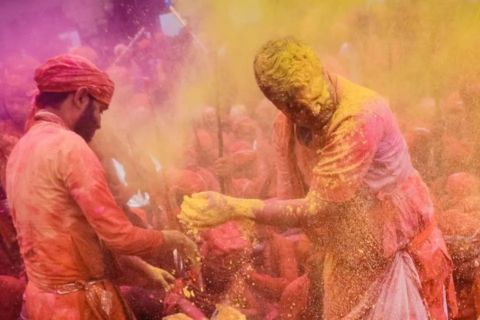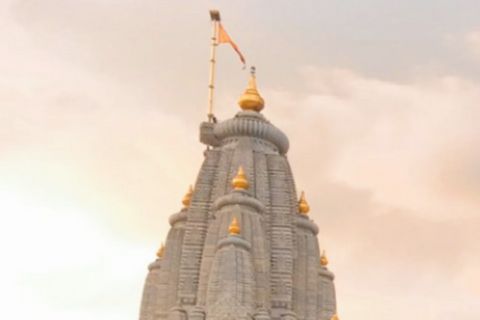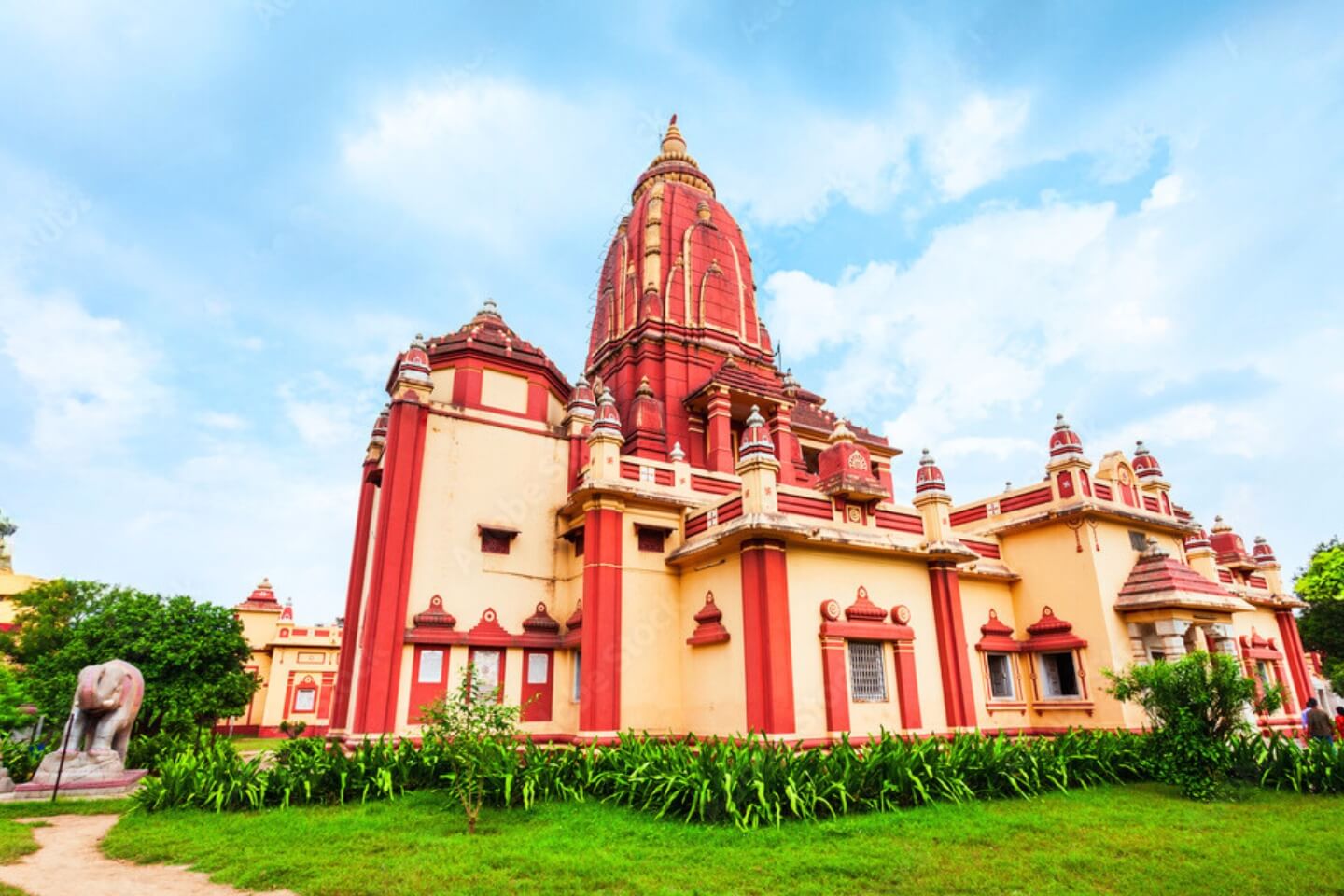The three popular tourist destinations of Agra, Mathura, and Vrindavan are all located within the state of Uttar Pradesh. Whether you are looking for an exciting holiday or a spiritual journey, our Gurgaon to Agra Mathura Vrindavan Tour Packages are perfect for you.
We at "Holidays DNA" at www.mathuravrindavantourism.co.in offer comprehensive coverage of these destinations, with Gurgaon to Agra Mathura Vrindavan Tour Packages. The packages include sightseeing tours to important tourist attractions in each destination and also include travel and accommodation options that suit different budget preferences.
Gurgaon to Agra Mathura Vrindavan Tour Packages help you make the most of your trip and explore all three destinations in a convenient and comfortable way. Our team of travel experts ensures you travel comfortably and have a safe trip.
Popular Sightseeing Places in Vrindavan that can be visited with this package
1. Shri Banke Bihari Mandir

One of the seven revered temples of the Thakur Ji of Vrindavan, Banke Bihari Mandir, showcases Lord Krishna in the Tribhanga pose. The deity was originally worshipped at Nidhivan before the Banke Bihari Temple was built in 1864.
It is one of the oldest temples in Vrindavan, and a unique trait of the temple is that no conches or loud bells are used to wake Lord Krishna in the morning. A 3-Step ritual of Shringar, Rajbhog, and Shayan Seva is carried out before the temple closes in the evening.
2. Prem Mandir
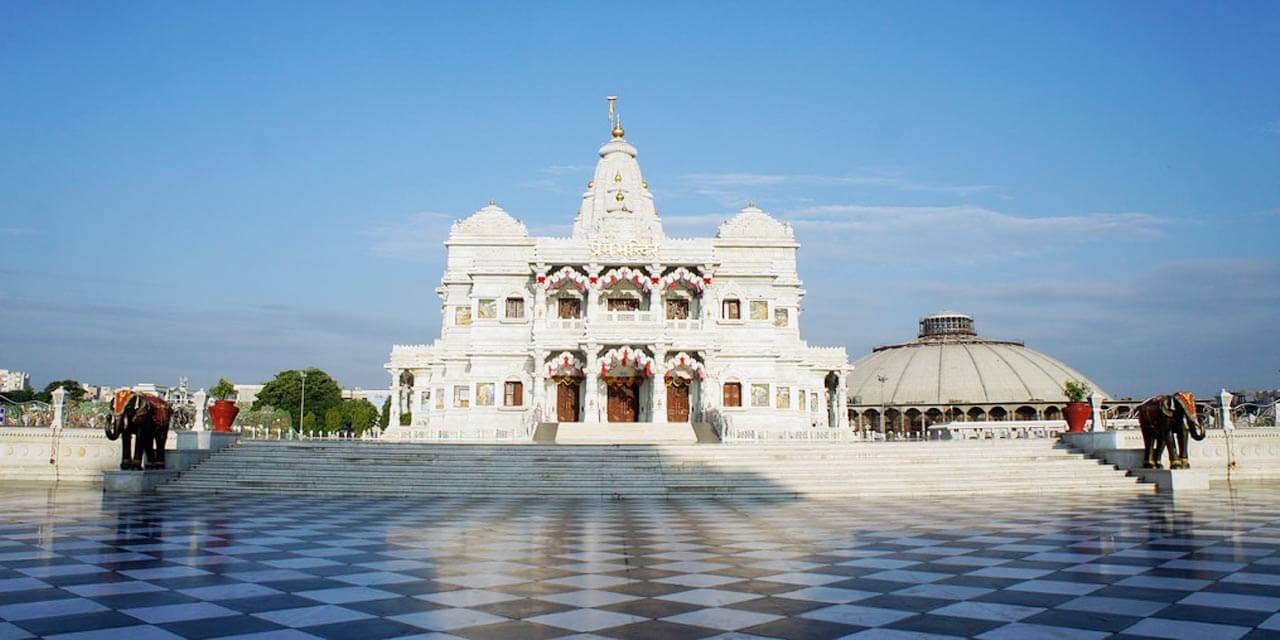
The peaceful atmosphere and beauty of Prem Mandir temple attract people from all over the world. Established by the 5th Jagadguru Kripalu Maharaj, it is dedicated to Radha-Krishna and Sita-Ram. The 125-foot-high temple is built of Italian marble and houses 94 Kalamandit pillars.
An unmissable feature of this temple is that while in the day it appears white, it changes colors every 30 seconds in the evening due to the special lights installed. You can participate in the Satsang and evening aarti. The temple is richly decorated to celebrate the occasions like Holi and Deepavali.
3. Shri Radha Raman Temple

Shri Radha Raman Temple is a large 500-year-old shrine located on the Keshi Ghat. You can admire the scenic beauty and the temple’s Hindu architecture. Here, the original Saligram of Lord Krishna and Radharani is present. The deity of Radha-Raman is self-manifested.
You can behold the Kaupina and black wood asana of Shri Chaitanya Mahaprabhu, brought from Jagannath Puri. There is a daily Abhisheka with Yamuna water. The fire for cooking in the temple kitchen has been burning continuously for 440 years.
4. Nidhivan
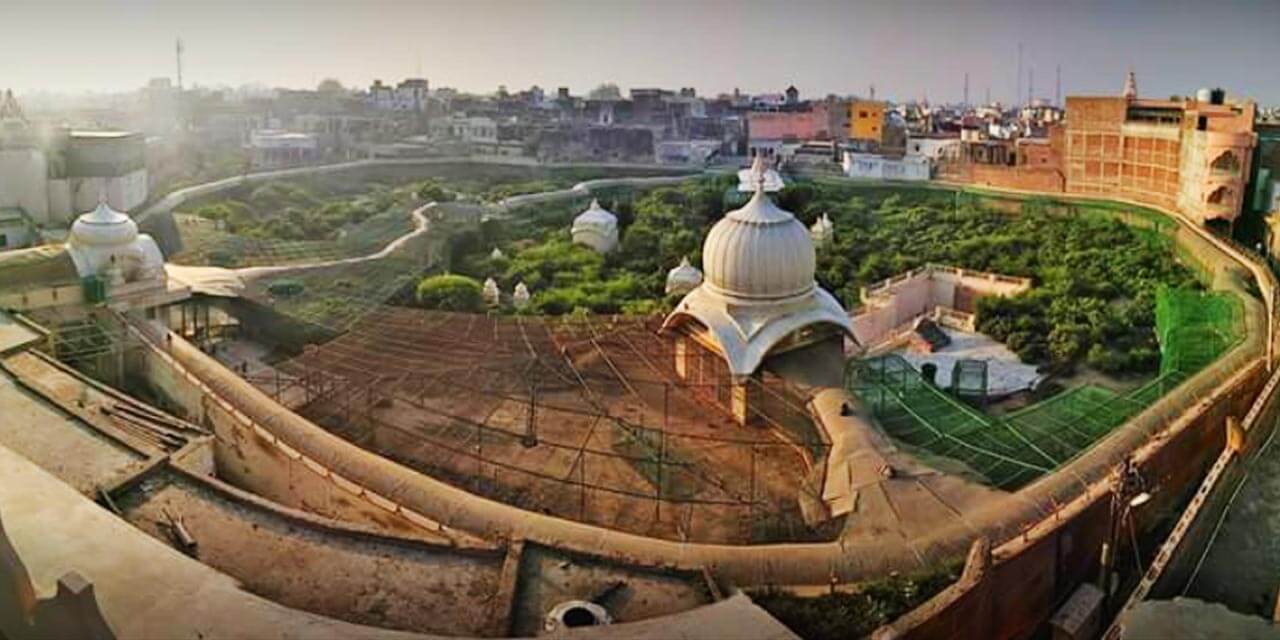
Nidhivan is also called the Tulsi Forest and Madhuvan. It is a prominent site dedicated to the pastimes of Radha and Krishna. Surrounded by small trees, it is engulfed in several mysteries. Radha and Krishna are believed to still visit the temple after sunset to perform Ras Leela.
While the trees are believed to be Krishna’s devotees, entry to the temple is restricted after the evening aarti. Even the Tulsi plants in Nidhivan stand in pairs. A few attractions include the Samadhi of Swami Haridas, the sacred well of Radha Rani, and a costume place.
5. Sri Ranganath Ji Temple
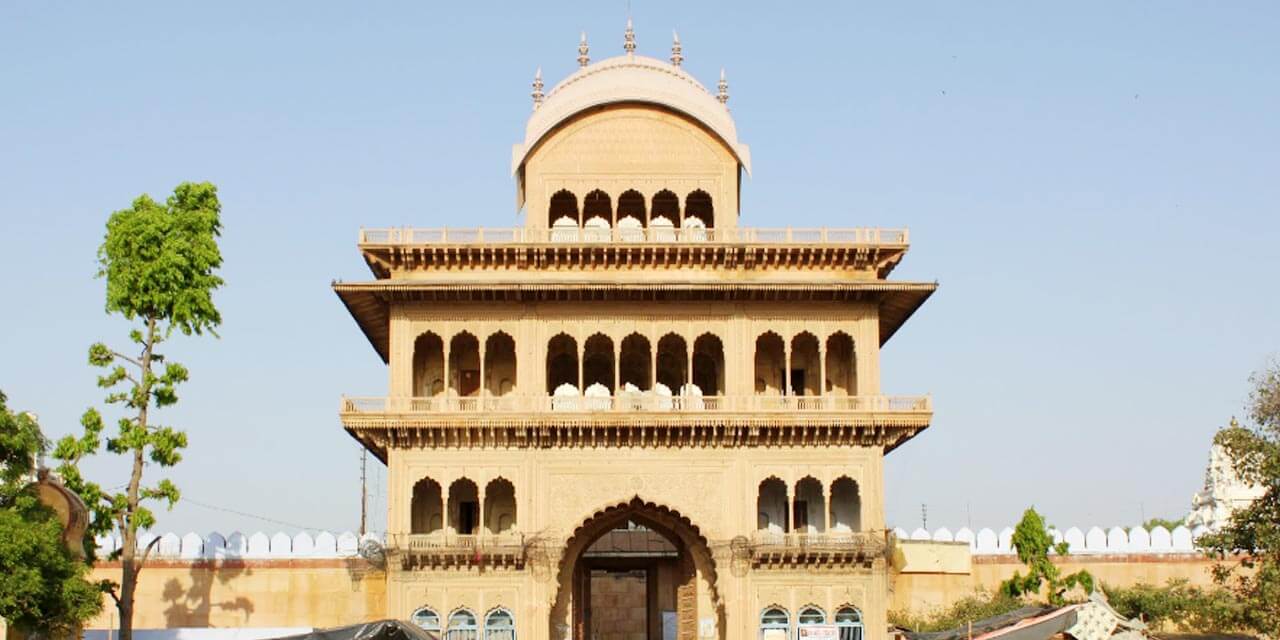
Shri Rangji or Ranganath Ji Temple is dedicated to a South Indian Vaishnavaite saint, Lord Sri Goda Ranagamannar and Lord Ranganatha is an incarnation of Krishna. It is the only temple in Vrindavan to be built in the Dravidian style.
Inspired by Ranganathaswamy Temple at Srirangam in Tamil Nadu, it captivates tourists with its mix of Rajasthani and Dravidian influences. The 7-storeyed Rajagopuram leads to the main sanctum and has concentric rectangular enclosures around the Garbha Griha.
Popular Sightseeing Places in Mathura that can be visited with this package
1. Govardhan Hill
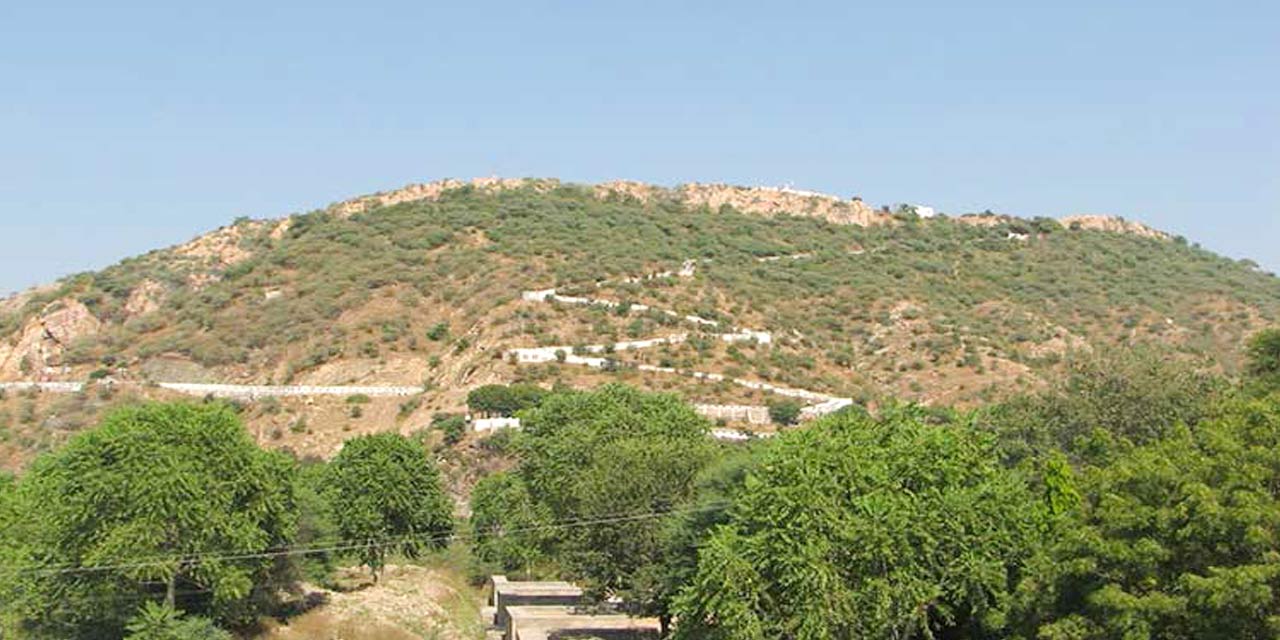
Playing an important role in Lord Krishna’s childhood, Govardhan Hill is a prominent Hindu place of attraction in Mathura. It commemorates his victory over Lord Indra. Vaishnavas celebrate Govardhan Puja to seek God’s protection. Guru Purnima is also celebrated with great fervor.
It is also called Mount Govardhana and Giriraj. It is located in the area of Govardhan and Radha Kund. The sandstone hill stands at 80 feet with a circumference of 38 km. You can do parikrama of the hill to appease Lord Krishna. You can perceive 17th-century buildings and structures at the site.
2. Vishram Ghat
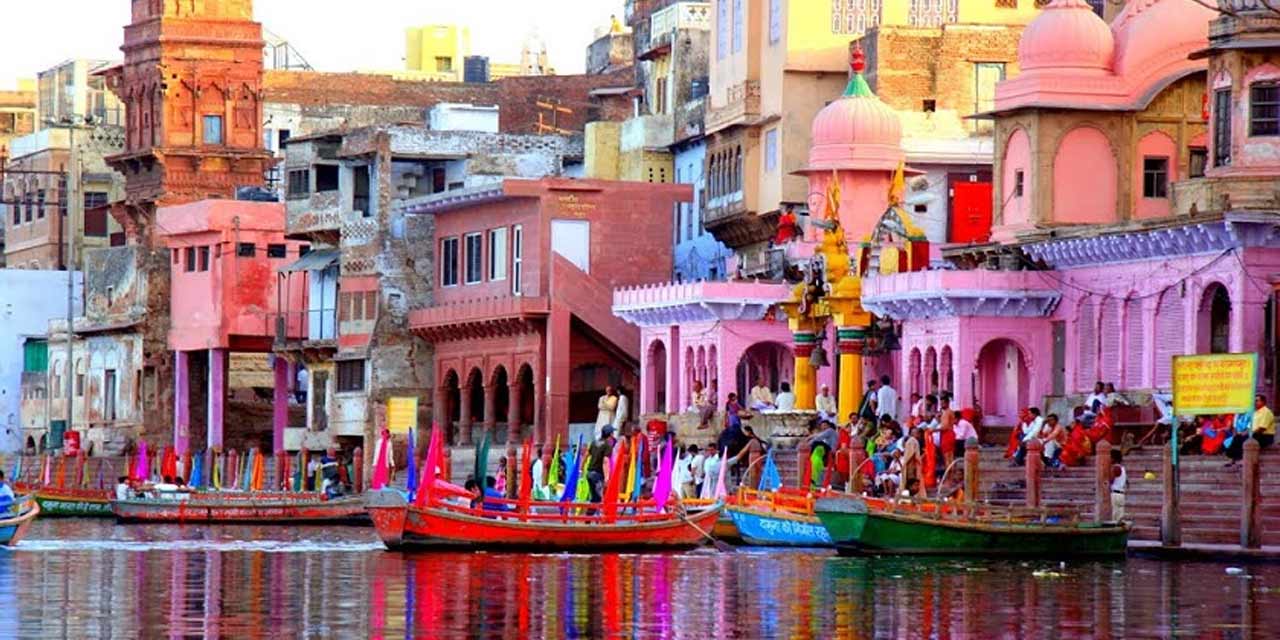
Vishram Ghat is a significant and sacred place that symbolizes the need to rest. Lord Krishna rested at the spot after defeating Kansa, his uncle. It is a crucial Ghat, being the starting and ending point of the traditional parikrama.
On a boat ride at the ghat, you can enjoy admirable vistas of the Yamuna River and the temples. The evening Aarti, with the floating Diyas on the river and chanting of hymns, is an unforgettable spectacle. Rituals such as daily or special Poojas, Bhai Dooj, and Pindi Pradan are performed with great dedication.
3. Birla Mandir
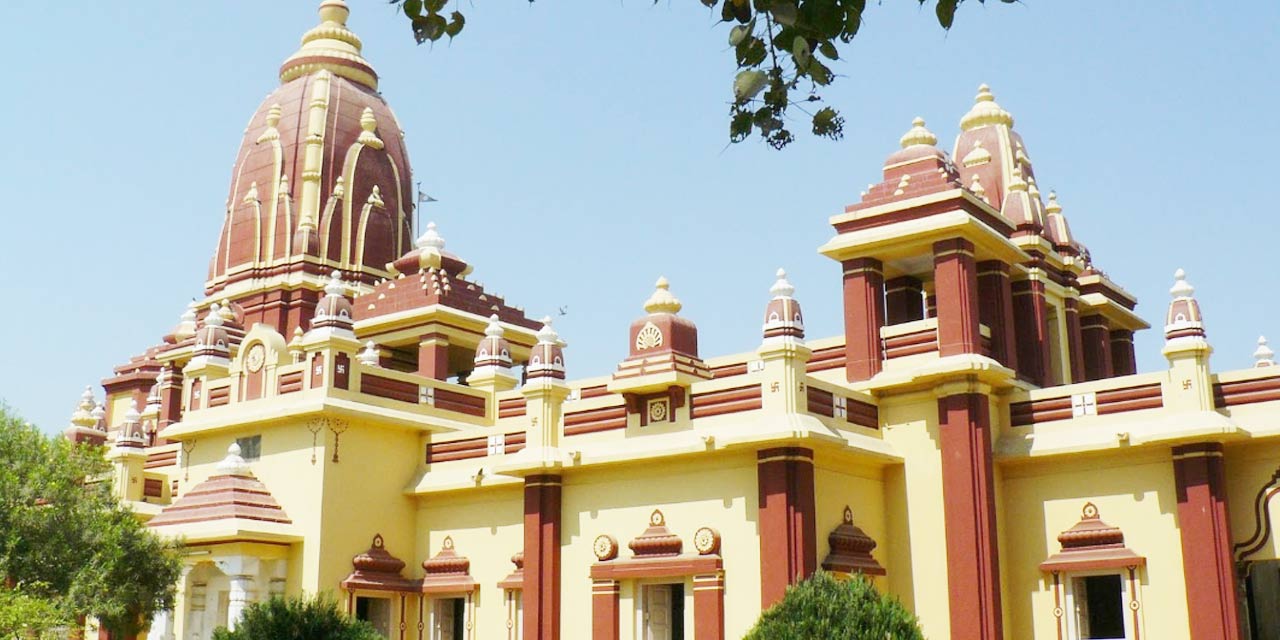
Resembling the Kandariya Mahadeva Temple of Khajuraho, Birla Mandir is dedicated to the Avtar of Lord Vishnu, Lakshmi-Narayan. The large red sandstone building is a prominent Hindu pilgrimage site. It is also known as Gita Mandir and has pillars with inscriptions of the Bhagavad Gita verses.
You can even see grand paintings adorning the temple walls and ceilings. It has a striking image of charioteer Krishna and Arjuna from the Mahabharata battlefield with a tall pillar at the center. Surrounded by a well-maintained garden, the temple evokes serenity. Inside the temple complex, there is also a small Hanuman temple.
4. Shri Krishna Janmsthan
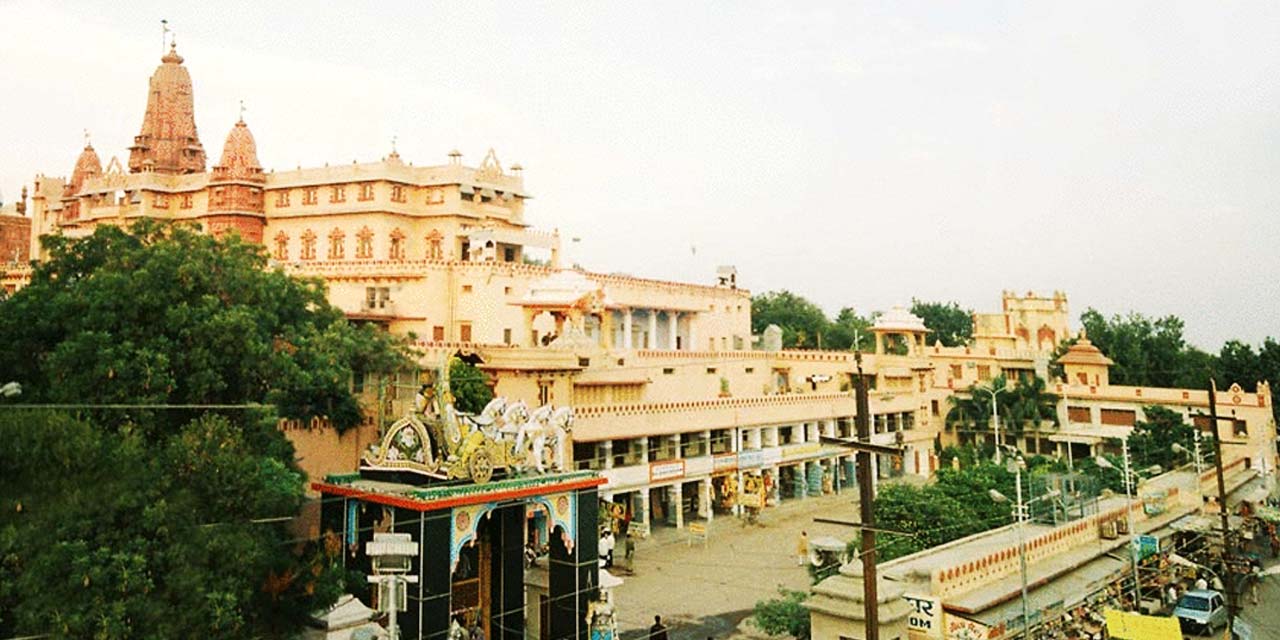
It was originally the prison cell where Kansa imprisoned Krishna’s parents and Krishna took birth. Besides the elegant temples, you can witness the Shahi Eidagh mosque, built by Aurangzeb. Today, inside the complex, you can see the Keshavdeva temple, Garbha Griha, and Bhagavata Bhawan.
Also known as Shri Krishna Janmbhoomi Temple, it has been destroyed several times but rebuilt by industrialists. You can visit it during the grand celebrations of Janmashtami, Holi, Diwali, and Basant Panchami.
5. Dwarkadhish Temple

You can worship the black marble idol of Lord Dwarkadhish, a form of Lord Krishna, at the Dwarkadhish Temple. Offer tulsi leaves, flowers, and Bhog to the deity. You can witness the stunning Rajasthani architectural patterns and craftsmanship inside the complex.
Some attractions include the majestic entrance, with steep steps leading to the courtyard, richly carved pillars, and the small Shaligram temple. The paintings on the ceilings portray various episodes of Krishna’s life. During the Shravan month, Lord Krishna cradling inside the Hindola is a charming sight. Besides, devotees celebrate Janmashtami, Radhashtami, Holi, and Diwali.
Popular Sightseeing Places in Agra that can be visited with this package
1. Taj Mahal
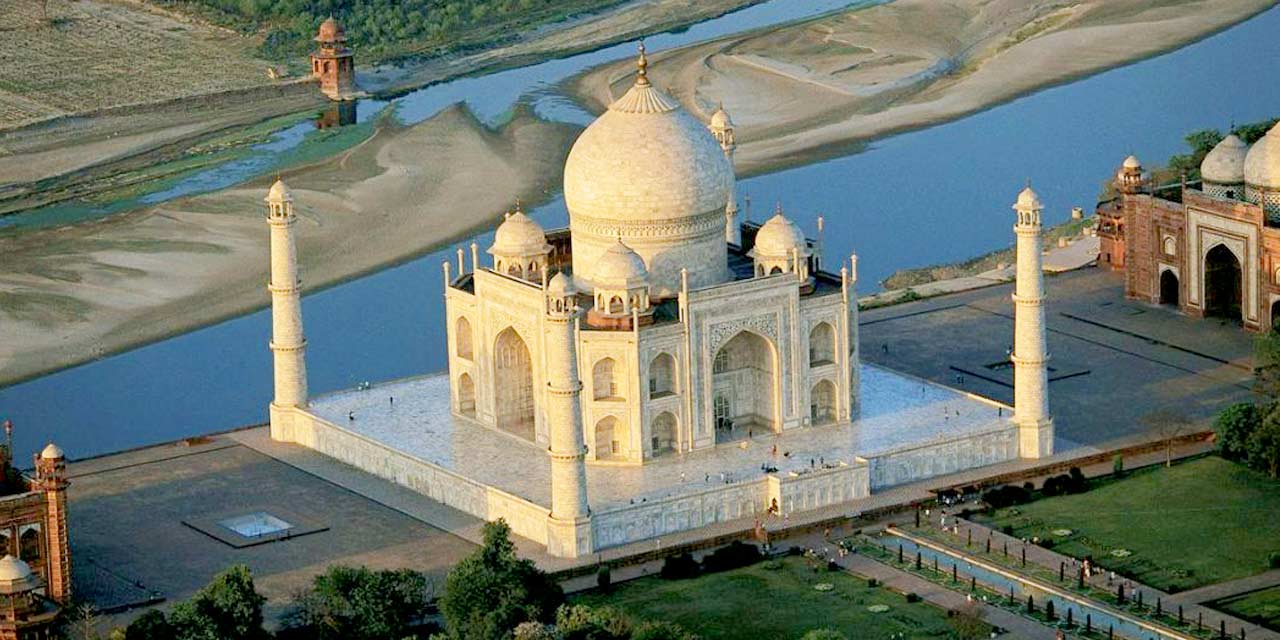
An exquisite ivory-white marble mausoleum, the Taj Mahal is a must-visit when you come to Agra. Located on the south bank of River Yamuna, her husband Shah Jahan constructed it for Mumtaz Mahal. It is a universally recognized gem of Muslim art.
You can catch breathtaking moments before sunrise and after sunset. The tomb is flanked by a manicured garden on all sides by a crenelated wall. You can behold the inlaid works of precious and semi-precious stones. There are mesmerizing Jali borders and Quran quotations on the cenotaphs in the octagonal-shaped inner chamber.
2. Fatehpur Sikri
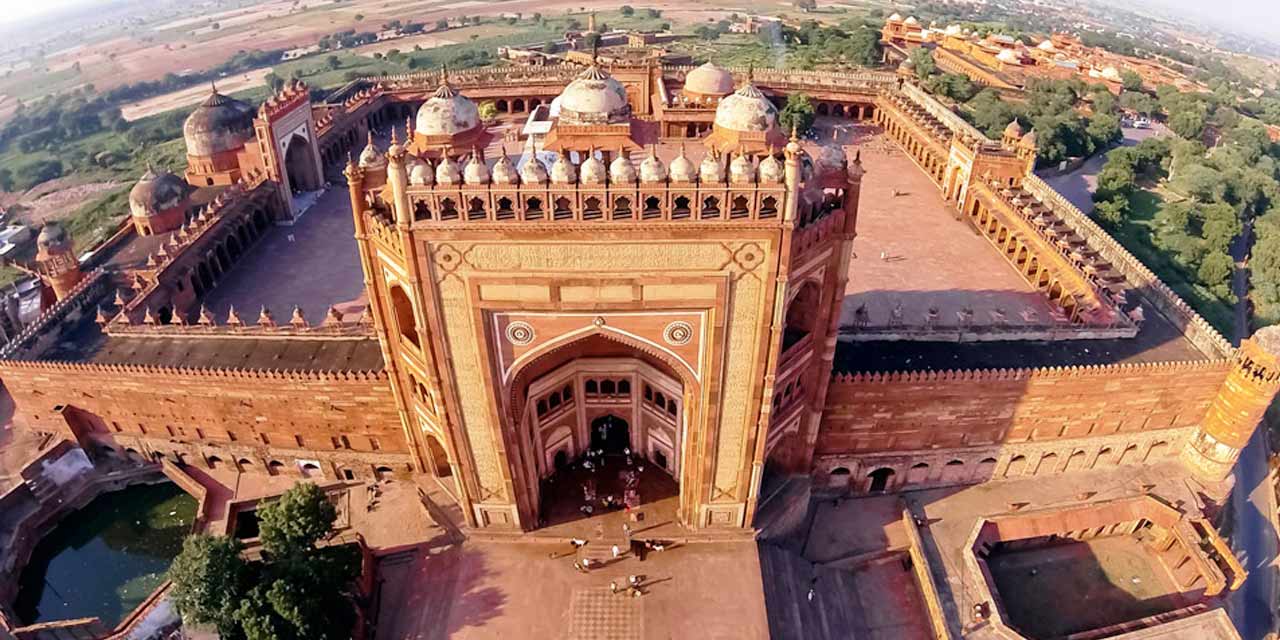
The abandoned city of Fatehpur Sikri is still a shining example of the architectural brilliance of the Mughals. It served as the Mughal capital for 14 years. Majorly constructed out of red sandstone, the structures and buildings represent Indo-Islamic architecture.
The city looks stunning during sunset. There are eight gates to the city. You can visit the Jama Masjid, one of India's largest and most functional. Moreover, you can admire the Buland Darwaza, Panch Mahal, The Tomb of Salim Chisti, Ibadat Khana, and Jodha Bai’s Palace.
3. Agra Fort

The plush and massive fortified city is noted for architectural excellence. Agra Fort is a red sandstone structure and a UNESCO World Heritage Site. Until 1638 it was the residence of the Mughals. It is also referred to as Lal Qila, Qila-i-Akbari, and Fort Rogue.
You can enter through the Amar Singh Gate and perceive the splendid rooms, mosques, and halls inside the fort. Some of the key structures are the Diwan-i-Aam, Diwan-i-Khas, Pearl Mosque, and Sheesh Mahal. From the royal pavilions, you can acquire stunning views of the Yamuna River and the Taj Mahal.
4. Chini Ka Rauza
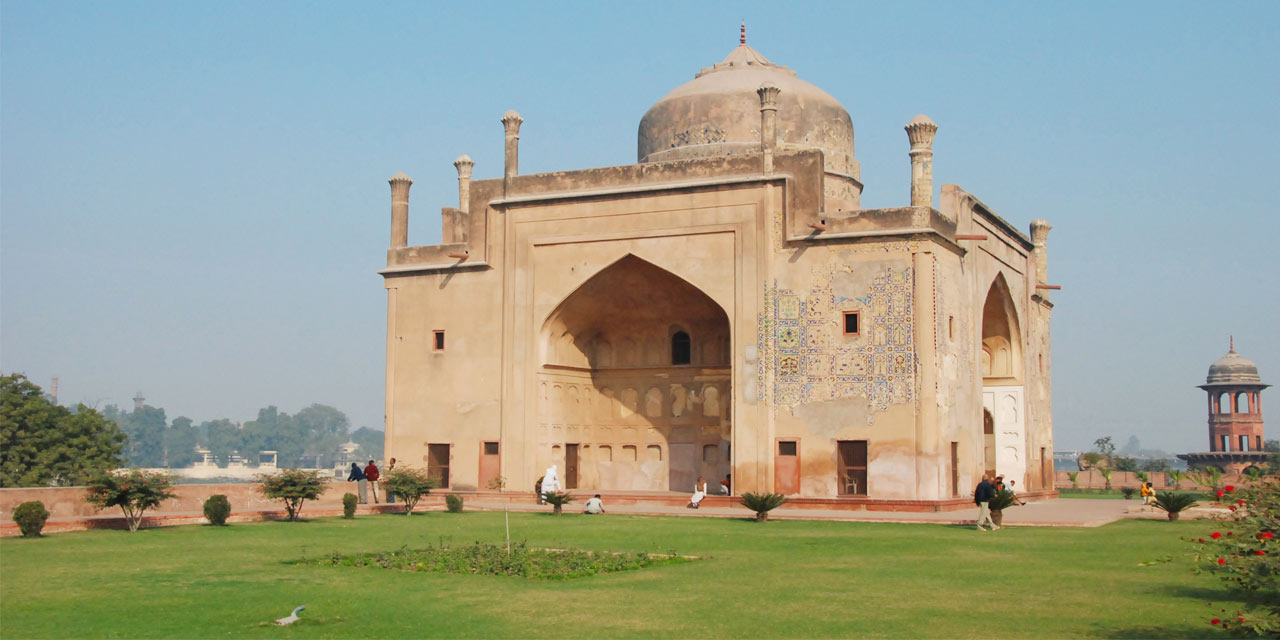
Chini ka Rauza, also known as the China Tomb, was built in memory of Shah Jahan’s prime minister, Allama Afzal Khan Mullah. It faces the Mecca Masjid. Following the Tartary tradition, he built his own tomb with bold color schemes, brownstones, and glazed tilework.
The walls are carved with Islamic inscriptions. You can even notice the colorful and intricate works on the balcony, brackets, and on Chajja. The arches are designed with orange and blue tiles in floral and arabesque patterns.
5. Jama Masjid
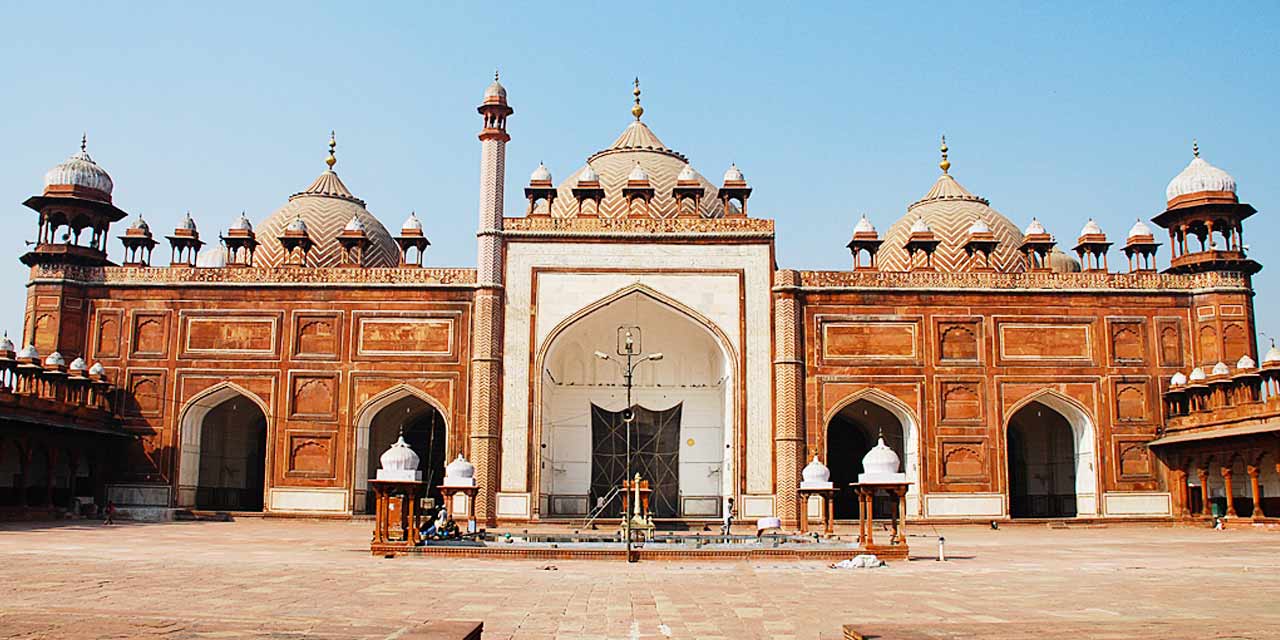
Jama Masjid is one of the finest mosques from the Mughal Era. People flock to catch a glimpse of the 17th-century colossal edifice, owing to its architectural beauty. Shah Jahan built it using red sandstone and white marble.
The majestic structure has four minarets, three marble domes, four towers, and three huge arched gateways. It has a strikingly designed black-and-white marble floor with 899 bordered spaces exclusively marked for worshippers. You can also admire the fluorescent motifs, lavish arches, and floral designs.


